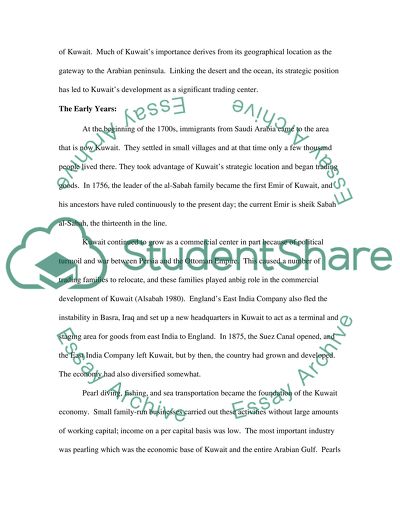Cite this document
(“The Socioeconomic Background of Kuwait Essay Example | Topics and Well Written Essays - 2000 words”, n.d.)
Retrieved from https://studentshare.org/miscellaneous/1500447-the-socioeconomic-background-of-kuwait
Retrieved from https://studentshare.org/miscellaneous/1500447-the-socioeconomic-background-of-kuwait
(The Socioeconomic Background of Kuwait Essay Example | Topics and Well Written Essays - 2000 Words)
https://studentshare.org/miscellaneous/1500447-the-socioeconomic-background-of-kuwait.
https://studentshare.org/miscellaneous/1500447-the-socioeconomic-background-of-kuwait.
“The Socioeconomic Background of Kuwait Essay Example | Topics and Well Written Essays - 2000 Words”, n.d. https://studentshare.org/miscellaneous/1500447-the-socioeconomic-background-of-kuwait.


